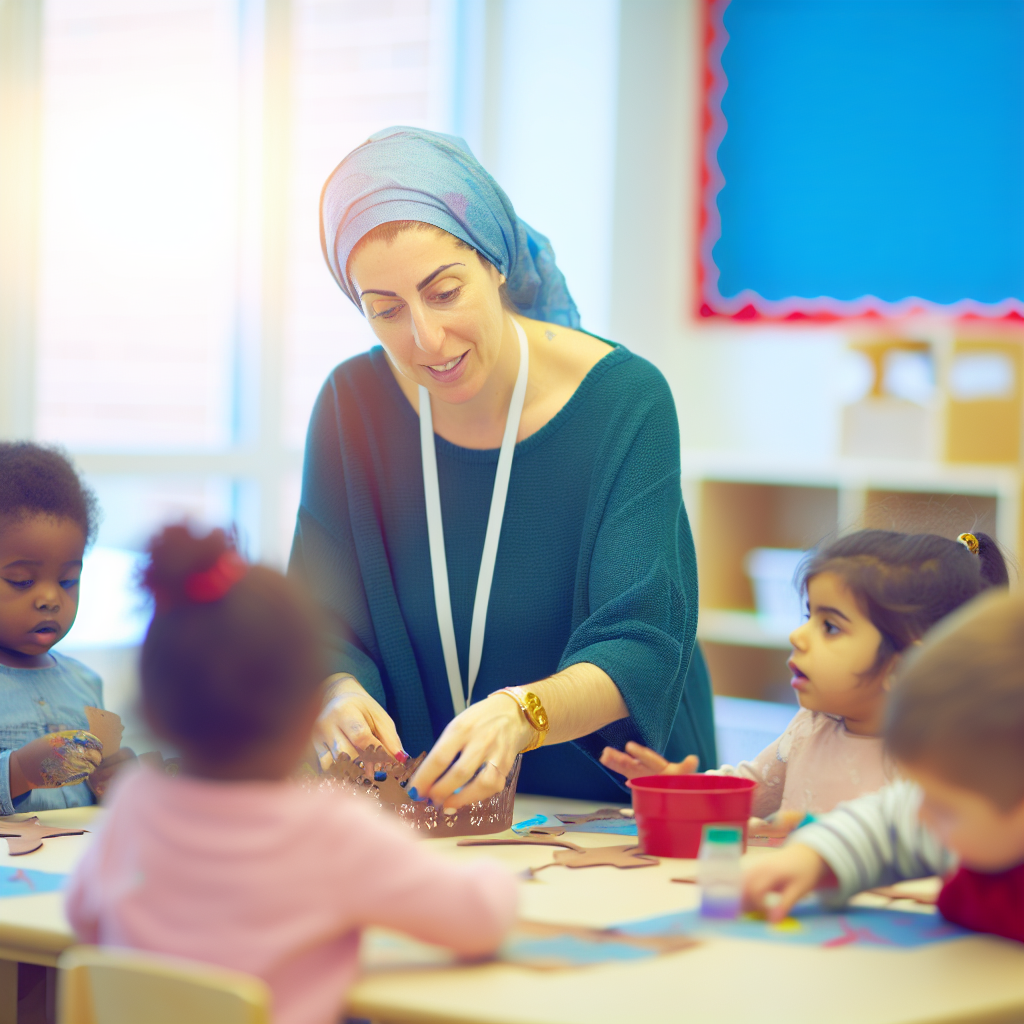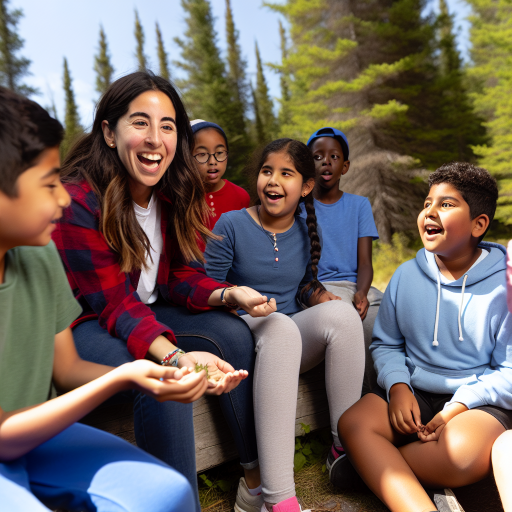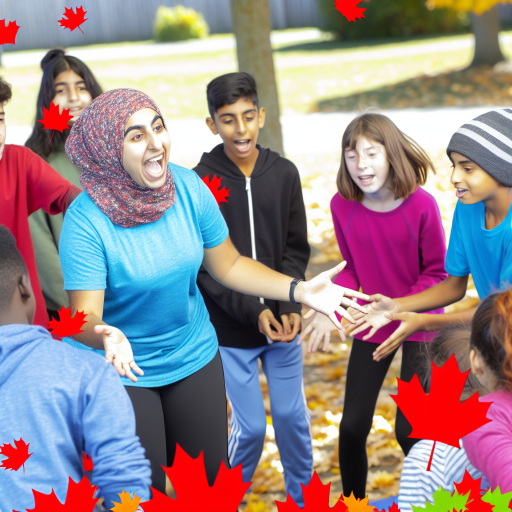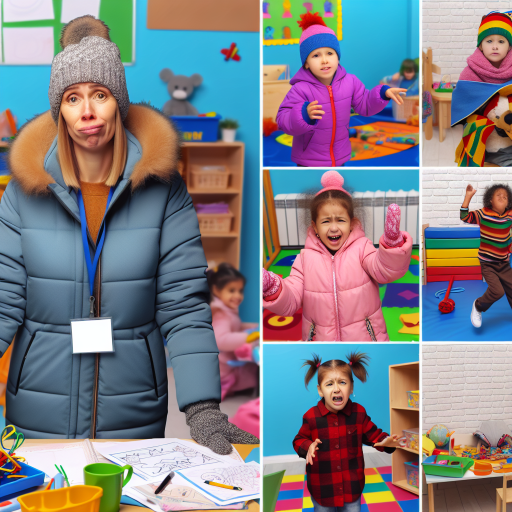Understanding the Role of Relationships in Early Childhood Education
Importance of Relationships
Relationships form the backbone of early childhood education.
They impact children’s emotional and social development significantly.
Additionally, strong relationships foster a safe learning environment.
This environment encourages children to explore and learn actively.
Building Trust with Children
Establishing trust is essential for effective teaching.
Children thrive when they feel understood and respected.
Using consistent routines helps children feel more secure.
Moreover, actively listening to children validates their feelings.
Connecting with Families
Collaborating with families enhances children’s educational experiences.
Regular communication builds strong partnerships between families and educators.
Encouraging family involvement strengthens children’s sense of community.
This collaboration supports children’s learning beyond the classroom.
Cultivating Peer Relationships
Facilitating interactions among children nurtures peer relationships.
Group activities promote teamwork and communication skills.
Additionally, these interactions help children learn conflict resolution.
Positive peer relationships contribute to a child’s overall happiness.
Professional Relationships with Colleagues
Strong professional relationships among educators improve teaching strategies.
Collaboration fosters a learning community within the education setting.
Sharing experiences and resources enhances professional growth.
This environment promotes innovative approaches to education.
Creating a Welcoming Classroom Environment for Children and Families
Designing an Inviting Space
A welcoming classroom is essential for positive interactions.
Use bright colors to create an engaging atmosphere.
Also, include comfortable seating arrangements for everyone.
Incorporate various learning stations to cater to different activities.
Additionally, display children’s artwork to celebrate their creativity.
Unlock Your Career Potential
Visualize a clear path to success with our tailored Career Consulting service. Personalized insights in just 1-3 days.
Get StartedFostering Relationships with Families
Building connections with families strengthens community ties.
Host regular meetings to discuss children’s progress and needs.
Share updates through newsletters and social media platforms.
Encourage families to participate in classroom activities.
Furthermore, respect diverse family backgrounds and cultures.
Encouraging Open Communication
Effective communication is crucial in early childhood education.
Provide various channels for families to express their concerns.
Be approachable and attentive during conversations.
Use positive language to foster trust and rapport.
Additionally, offer resources to support parents at home.
Creating a Sense of Belonging
A sense of belonging fosters emotional security for children.
Implement morning greetings to acknowledge each child.
Encourage peer interactions through collaborative activities.
Highlight the uniqueness of each child within the classroom.
Moreover, organize community events to strengthen relationships.
Techniques for Building Trust with Young Children and Their Parents
Creating a Safe and Welcoming Environment
Start by ensuring your classroom is welcoming and inviting.
Use bright colors and comfortable furniture to create a positive vibe.
Make sure that all children feel valued and accepted.
Provide materials that cater to diverse needs and interests.
Encourage kids to express themselves freely without fear of judgment.
Building Relationships with Children
Engage with children during activities to build rapport.
Ask open-ended questions to encourage conversation.
Listen actively and respond with genuine interest.
Make personal connections by learning about each child’s interests.
Use positive reinforcement to celebrate their achievements.
Communicating with Parents
Establish open lines of communication with parents from day one.
Regularly update them on their child’s progress and activities.
Utilize newsletters or apps to share classroom news.
Invite parents to participate in classroom events and activities.
Always approach parents with empathy and understanding.
Fostering Collaborative Partnerships
Encourage parents to be involved in their child’s learning journey.
Organize workshops that empower parents with knowledge and skills.
Share resources and strategies that support learning at home.
Facilitate parent-teacher conferences to discuss concerns and progress.
Work together to set goals for each child’s development.
Encouraging Parent Feedback
Solicit feedback from parents to improve your teaching practices.
Create opportunities for them to share thoughts about the program.
Use surveys or informal conversations to gather input.
Act on feedback to show that their opinions matter.
Build trust by demonstrating responsiveness to their suggestions.
Explore Further: How to Become a Certified Early Childhood Educator in Canada
The Importance of Open Communication with Families and Caregivers
Enhancing Relationships
Establishing open communication builds strong relationships with families and caregivers.
This connection fosters trust and collaboration in the educational process.
Moreover, it creates a supportive environment for children’s development.
Sharing Information
Regular updates keep families informed about their child’s progress.
Sharing insights into daily activities can help parents understand their child’s experiences.
Additionally, discussing developmental milestones strengthens their involvement.
Encouraging Feedback
Inviting families to share their thoughts encourages a two-way dialogue.
This feedback helps educators tailor their approaches to meet individual needs.
Consequently, it promotes a partnership that benefits the child’s growth.
Utilizing Technology
Modern tools can enhance communication between educators and families.
Platforms like email, messaging apps, and newsletters facilitate timely updates.
Furthermore, they allow for instant sharing of resources and events.
Building Community
Open communication fosters a sense of belonging among families.
Organizing community events encourages participation and engagement.
Ultimately, this strengthens the entire learning community.
Delve into the Subject: Career Advice for Aspiring Youth Program Facilitators
Engaging in Active Listening and Responsive Interactions
The Importance of Active Listening
Active listening fosters deeper connections with children.
It shows that you value their thoughts and feelings.
This approach helps build trust and respect in the classroom.
Consequently, children feel more comfortable expressing themselves.
They often share more when they feel truly heard.
Strategies for Active Listening
Start by maintaining eye contact during conversations.
This simple act conveys that you are engaged and interested.
Additionally, acknowledge their comments with gentle nods.
Encourage children to elaborate on their ideas.
Use prompts like, “Can you tell me more about that?”
Responding Effectively
Your responses should reflect a genuine understanding of their feelings.
Acknowledging emotions helps children feel validated.
For example, say, “It sounds like you felt sad when that happened.”
This validation encourages further sharing and communication.
Creating a Responsive Environment
Establishing a responsive environment begins with observation.
Notice the small signs of when children need support.
Being responsive means meeting their needs promptly.
For instance, when a child struggles, offer encouragement and assistance.
Encouraging Open Dialogue
Encourage children to ask questions and share opinions freely.
Foster discussions that allow for multiple viewpoints.
You might say, “What do you think about this situation?”
This approach nurtures critical thinking and confidence.
Building Relationships with Families
Engaging with families enhances educational partnerships.
Regular communication about children’s progress builds trust.
Organize family events that encourage interaction with educators.
Invite families to share their perspectives and cultures.
Gain More Insights: How Technology Is Changing the Role of Early Childhood Educators

Fostering Social Skills Through Group Activities and Play
The Importance of Social Skills for Young Children
Social skills are vital for children’s overall development.
They enable effective communication and relationship-building.
Moreover, they support emotional regulation and empathy.
Creating Opportunities for Interaction
Group activities encourage children to interact with peers.
This interaction fosters teamwork and collaboration.
Children learn to share, take turns, and resolve conflicts.
Types of Group Activities
- Circle time discussions promote open communication.
- Cooperative games enhance problem-solving skills.
- Role-playing activities develop empathy and understanding.
Integrating Play into Learning
Play is an essential aspect of early childhood education.
It naturally engages children in social interactions.
Through play, children express emotions and build friendships.
Benefits of Collaborative Play
- Improves communication and language skills.
- Encourages creativity and imagination.
- Builds self-confidence and independence.
Observing and Assessing Social Interaction
Teachers should observe children’s interactions during activities.
This assessment helps identify areas for improvement.
Additionally, it guides future activities and strategies.
Encouraging Positive Social Behaviors
Modeling positive social behavior is crucial for educators.
Children learn by watching their teachers interact.
Recognizing and rewarding positive interactions reinforces good behavior.
Discover More: Exploring Workplace Settings for Early Childhood Educators
Utilizing Community Resources to Strengthen Connections
Identifying Local Organizations
Begin by researching local organizations that support early childhood education.
Look for nonprofits, libraries, and community centers.
These groups often have programs that can benefit your classroom.
Building Partnerships
Reach out to these organizations to establish relationships.
Invite local experts to share their knowledge with your students.
This connection enriches the educational experience.
Engaging Families
Include families in community events hosted by your partners.
Encourage parents to volunteer in the classroom.
Appreciate their contributions to foster a welcoming environment.
Accessing Resources
Utilize community resources to enhance learning activities.
Use local parks and nature centers for outdoor learning experiences.
Incorporate materials and supplies from local businesses.
Sharing Knowledge
Host workshops or informational sessions for families.
Provide valuable resources related to child development.
Collaborating with local organizations strengthens community bonds.
Celebrating Cultural Diversity
Incorporate cultural events and celebrations from community partners.
This promotes understanding and appreciation among children.
Integrating diverse perspectives enriches the learning environment.
Implementing Culturally Responsive Practices to Embrace Diversity
Understanding Culturally Responsive Practices
Culturally responsive practices recognize and celebrate diverse backgrounds.
These practices enhance educational experiences for all children.
Moreover, they foster a sense of belonging in the classroom.
Building Relationships with Families
Establishing relationships with families strengthens community ties.
Engage parents through regular communication and feedback.
Additionally, involve parents in classroom activities and decision-making.
For example, organize cultural sharing days where families showcase traditions.
Incorporating Diverse Learning Materials
Select educational materials that reflect diverse cultures and experiences.
Books, toys, and visual aids should represent various backgrounds.
Furthermore, ensure that these materials challenge stereotypes.
Ensure children see themselves represented positively in learning resources.
Emphasizing Inclusive Teaching Strategies
Implementing inclusive strategies engages all learners effectively.
Differentiation of instruction should accommodate various learning styles.
Employ group work to encourage collaboration among diverse students.
For instance, assign roles in group tasks that leverage individual strengths.
Promoting Cultural Awareness
Incorporating cultural awareness into the curriculum is essential.
Teach children about different cultures through storytelling and art.
Host events that celebrate various cultural traditions throughout the year.
Additionally, encourage students to share their own cultures with peers.
Continuous Professional Development
Engage in professional development focused on cultural competence.
Workshops can enhance understanding of diverse student needs.
Furthermore, collaborate with colleagues to share best practices.
Always reflect on your teaching practices to improve inclusivity.
Creating a Supportive Environment
Establish a classroom environment where diversity is celebrated.
Encourage open discussions about cultural differences and similarities.
Value every child’s contribution to create a sense of community.
Moreover, conduct regular assessments to identify areas for improvement.
Additional Resources
Guiding Principles for Creating Safe, Inclusive, Supportive, and Fair …
ACE | Health and Fitness Education, Research, Career Support




